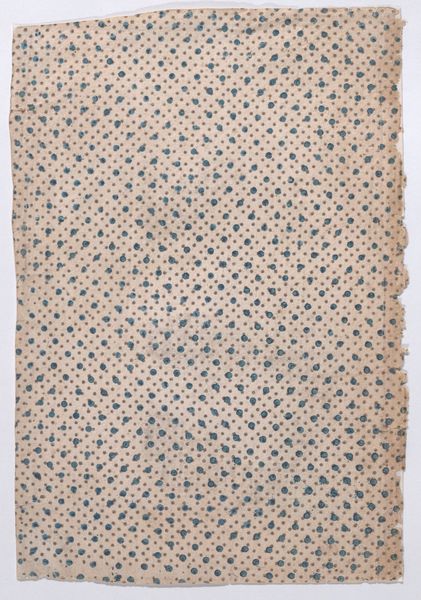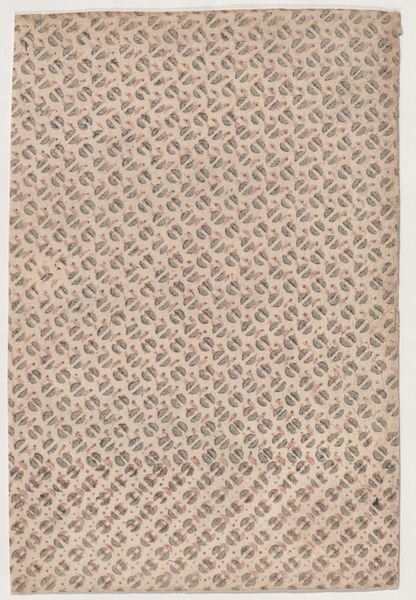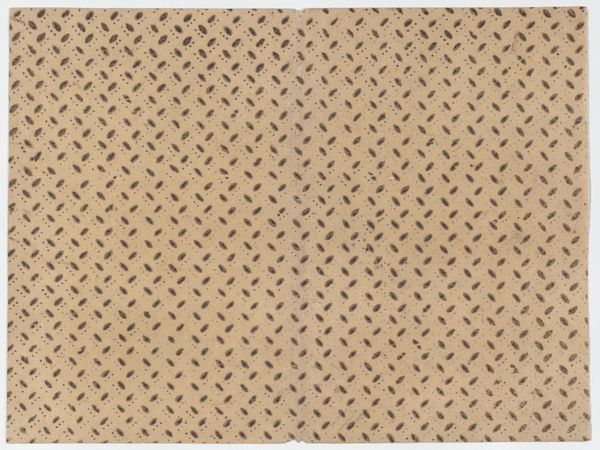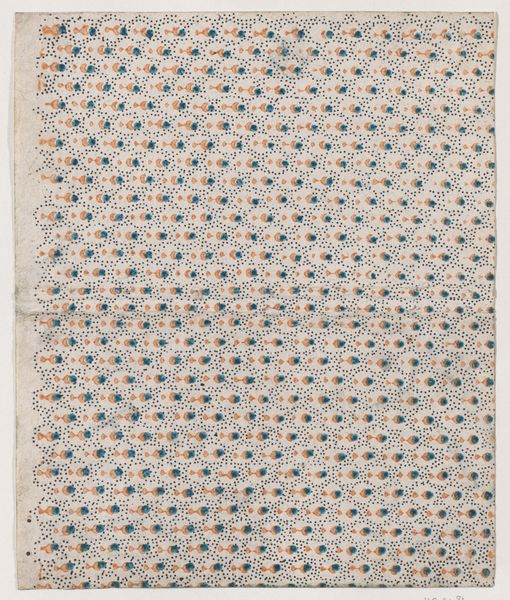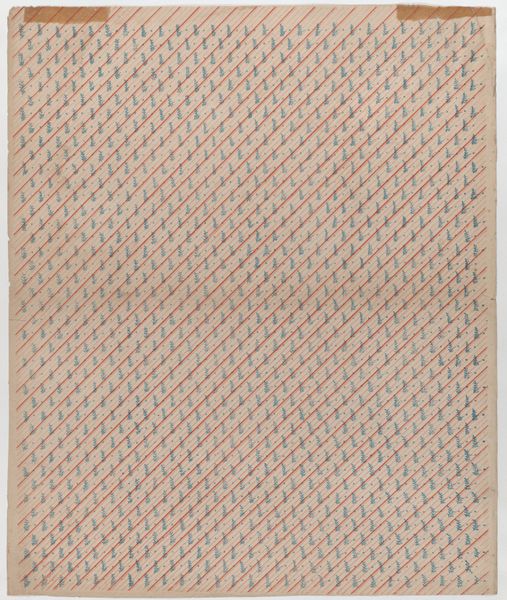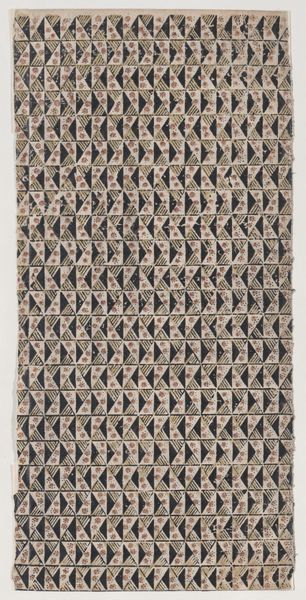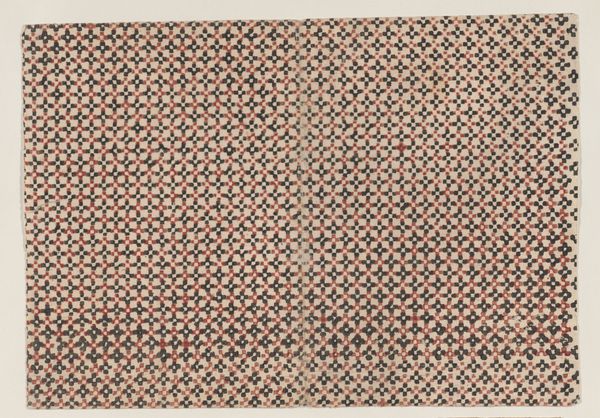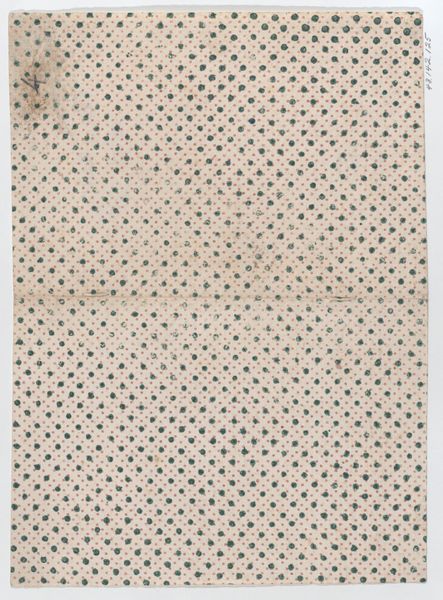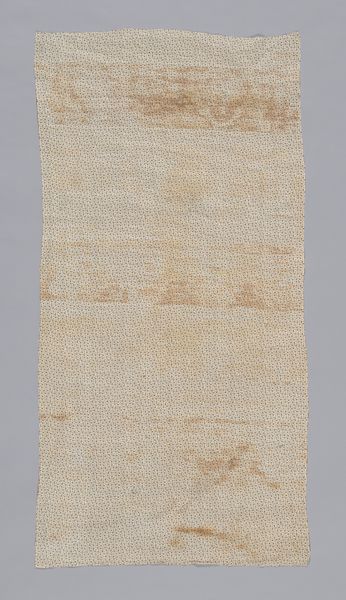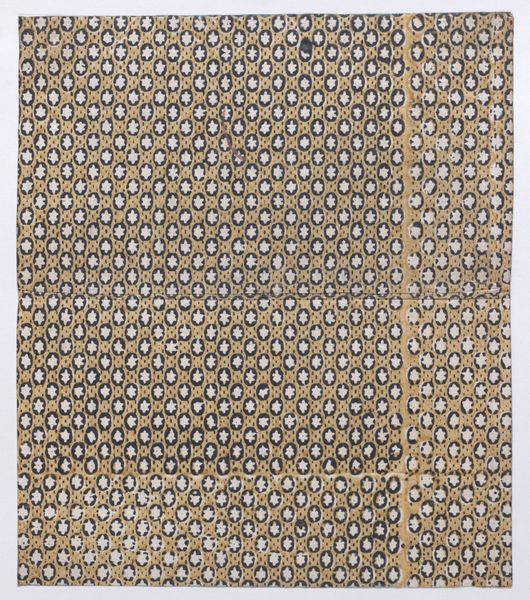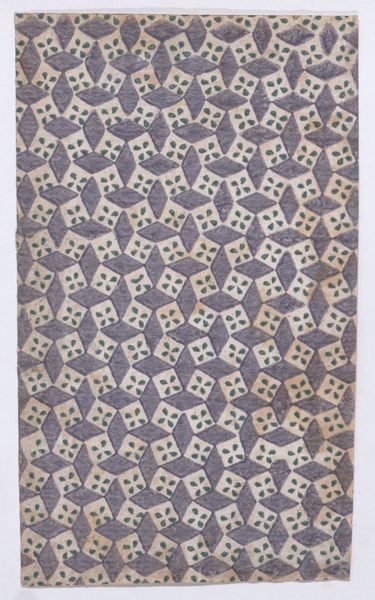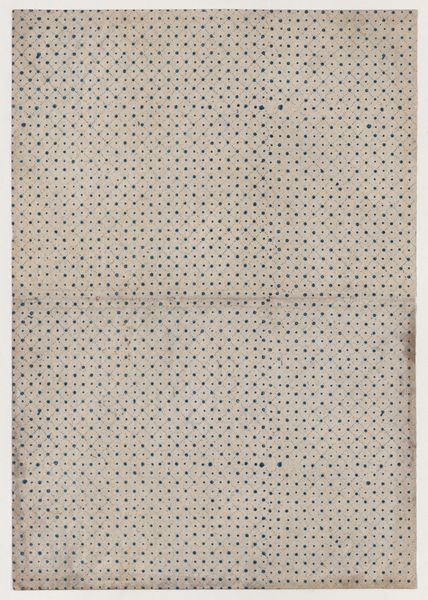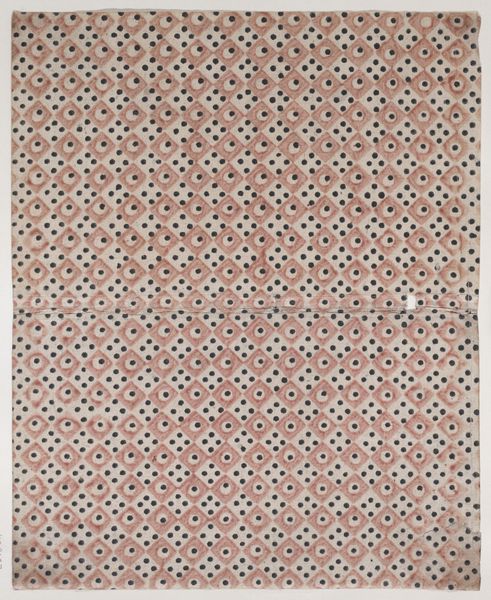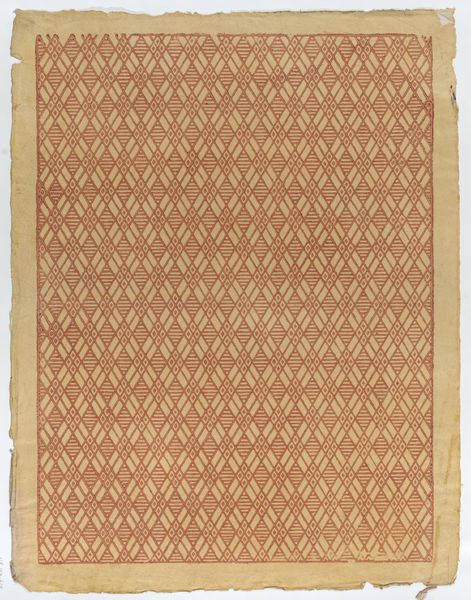
drawing, print, textile
#
drawing
#
organic
# print
#
textile
#
organic pattern
#
geometric
#
repetition of pattern
#
vertical pattern
#
pattern repetition
Dimensions: Sheet: 12 1/8 × 8 1/2 in. (30.8 × 21.6 cm)
Copyright: Public Domain
Editor: At first glance, this all-over pattern evokes a sense of calm repetition, almost hypnotic in its understated rhythm. Curator: Indeed. What we have here is an intriguing piece, tentatively titled "Sheet with overall pattern of dots and ovals," dating from 1800 to 1900, origin unknown. Housed at the Metropolitan Museum of Art, it presents a meticulously rendered design, likely intended for textile production. Notice the interplay of positive and negative space. The careful arrangement suggests a deep understanding of compositional structure. Editor: And clearly some means of reproduction, I'm sure. The materiality here is very intriguing to me. Look at the process and labor involved, a sort of early industrial application bridging artistry with commercial production. You have these dots and oval shapes forming an almost plant-like cascading motif – the material and the technique intersect. It suggests production that values a certain handmade aesthetic with the onset of the industrial age. Curator: Precisely! The semiotic potential within that tension cannot be ignored; organic forms rendered through geometric repetition, speaks to the evolving relationship between nature and industry during that era. Each tiny dot and oval, acting as a signifier in a much grander scheme. This intricate arrangement compels us to consider meaning making through visual order, reflecting artistic concerns related to form, order, and structure. Editor: The more I look at it, the more I feel the piece raises questions. Who designed it? How widely was it produced? And, given the organic elements within its form, were these printed materials consumed differently than other, purely geometric patterns? There's an exciting dialogue to be had there about material consumption. Curator: Absolutely. Examining the balance between order and spontaneity brings us to an appreciation of how seemingly simple visual systems embody far-reaching complexities in both production and conceptual understanding. Editor: Ultimately, viewing the work through the lens of production allows us to see its connection to the human ingenuity that sought to reconcile artistic creation with practical utility, inviting further interrogation of that relationship today. Curator: Yes, while delving into its composition illuminates artistic inquiries concerning the creation of meaning itself. A worthwhile perspective indeed.
Comments
No comments
Be the first to comment and join the conversation on the ultimate creative platform.
